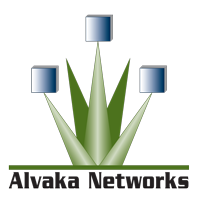DragonForce Ransomware
Recovery Services
Alvaka’s DragonForce Ransomware Recovery Services are designed to protect your company’s systems from Ransomware and help you recovery when necessary.
Learn more
What is DragonForce Ransomware?
DragonForce Ransomware is a relatively new strain of ransomware that first emerged in November 2023. It is known for using a leaked ransomware builder from the infamous LockBit ransomware group, specifically from the LockBit Black variant, to craft its own malicious payloads. This ability to leverage advanced tools has quickly made DragonForce a notable threat in the cybersecurity landscape. The group has taken responsibility for a number of high-profile attacks on organizations such as the Ohio Lottery, Yakult Australia, and Coca-Cola Singapore.
The emergence of DragonForce Ransomware illustrates the broader issue of the risks associated with the availability of sophisticated ransomware-building tools in the cybercriminal community, which can enable even less technically skilled attackers to launch potent ransomware campaigns.
How Does DragonForce Ransomware Operate?
How Can You Protect Your Company Against DragonForce Ransomware?
Protecting your company against DragonForce Ransomware involves a multi-layered approach to cybersecurity, incorporating proactive measures, employee training, and effective response strategies. Here are several key steps that organizations can take to safeguard against this type of ransomware attack:
1. Regular Backups: Ensure that all critical data is regularly backed up and that backups are stored in a secure, offsite location. Backups should be isolated from network connections that could be accessible to ransomware.
2. Patch Management: Keep all systems, software, and applications up-to-date with the latest security patches. Many ransomware attacks exploit known vulnerabilities in outdated software.
3. Employee Training: Conduct regular training sessions with all employees about cybersecurity best practices. This should include recognizing phishing attempts, the importance of using strong, unique passwords, and the dangers of using unsecured networks.
4. Advanced Threat Protection: Implement endpoint security solutions that include advanced threat protection capabilities. These tools can detect, isolate, and neutralize threats before they can execute.
5. Email Filtering: Use advanced email filtering solutions to block malicious emails that could be carrying ransomware or phishing links. This helps reduce the risk of employees inadvertently opening harmful attachments or links.
6. Access Controls: Employ strict access controls and user permissions to limit access to sensitive information based on user roles. This practice, known as the principle of least privilege, minimizes the potential damage that can be done if an account is compromised.
7. Network Segmentation: Segment your network to limit the spread of ransomware if it does infiltrate your systems. By separating critical network segments, you can contain the damage to a smaller area of your network.
8. Incident Response Plan: Develop and regularly update an incident response plan. This plan should outline specific steps to be taken in the event of a ransomware attack, including how to isolate infected systems, whom to notify (including regulatory bodies), and how to restore systems from backups.
9. Monitor and Respond: Regularly monitor network traffic and use security information and event management (SIEM) systems to detect unusual activity that could indicate an attack. Have a response team ready to act upon these alerts.
10. Cyber Insurance: Consider purchasing cyber insurance that covers ransomware attacks. This can help mitigate the financial impact of an attack, although it’s important to understand what is covered under the policy.
11. External Security Audit: Regularly perform security audits and penetration testing using external security experts. These audits can help identify and remediate vulnerabilities before they can be exploited by attackers.
Implementing these strategies can significantly reduce the risk of a DragonForce Ransomware attack and ensure that your organization is better prepared to respond if an attack occurs.





 Smoke testing is a term used to describe the testing process for servers after patches are applied.
Smoke testing is a term used to describe the testing process for servers after patches are applied.  This is a basic cost calculator for you to compute your typical monthly cost for patching your servers, PCs, laptops, tablets and associated application software. It also forms the basis for you to begin calculating your Return on Investment for software patching, or for comparison with alternatives to the manual process of patching operating systems and application software—such as Patch Management as a Service, also known as Vulnerability Management as a Service.
This is a basic cost calculator for you to compute your typical monthly cost for patching your servers, PCs, laptops, tablets and associated application software. It also forms the basis for you to begin calculating your Return on Investment for software patching, or for comparison with alternatives to the manual process of patching operating systems and application software—such as Patch Management as a Service, also known as Vulnerability Management as a Service.